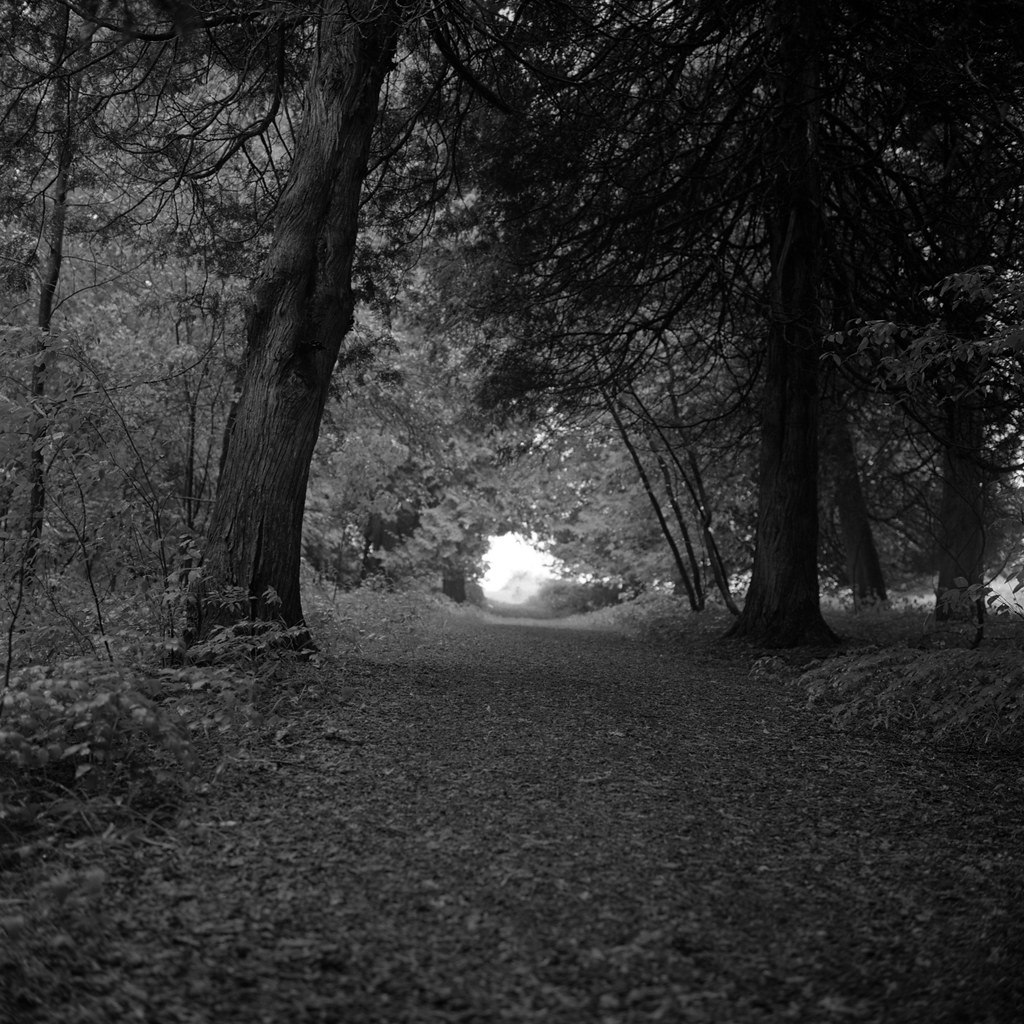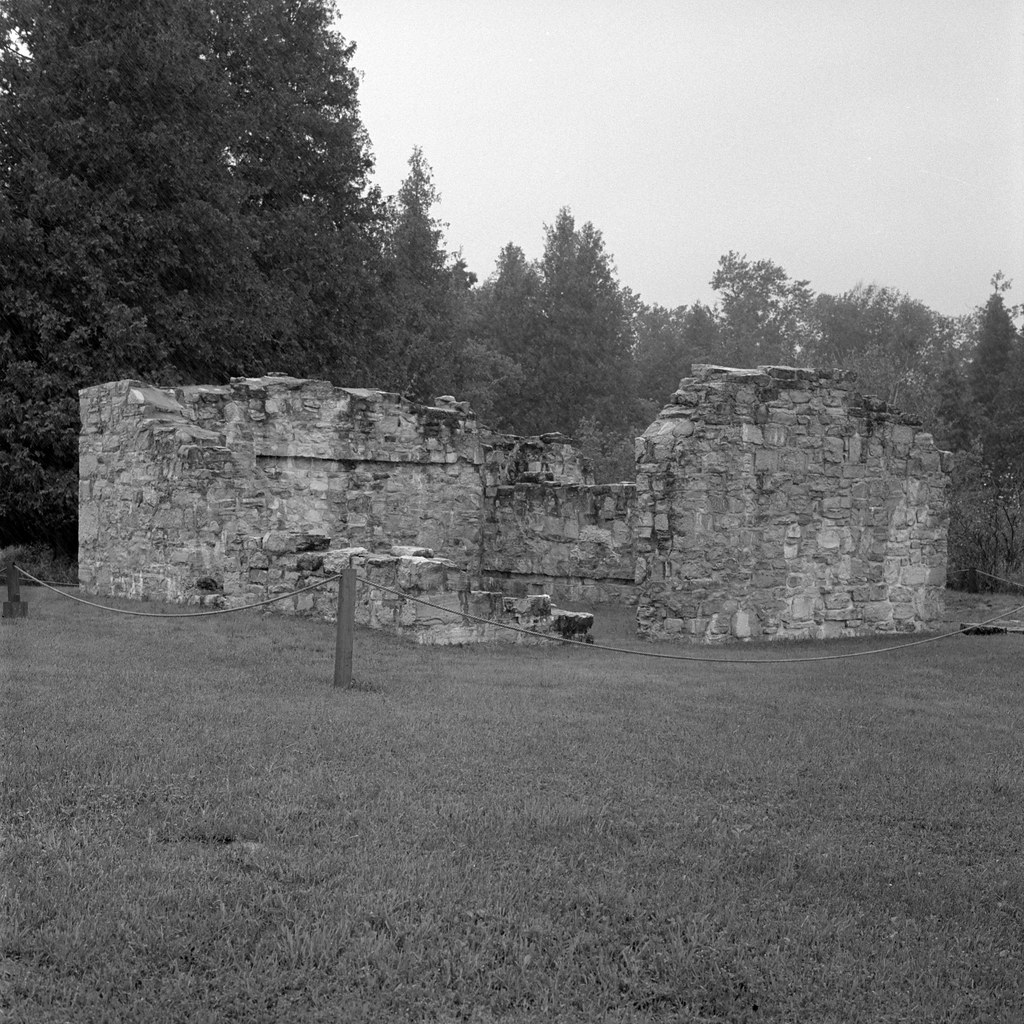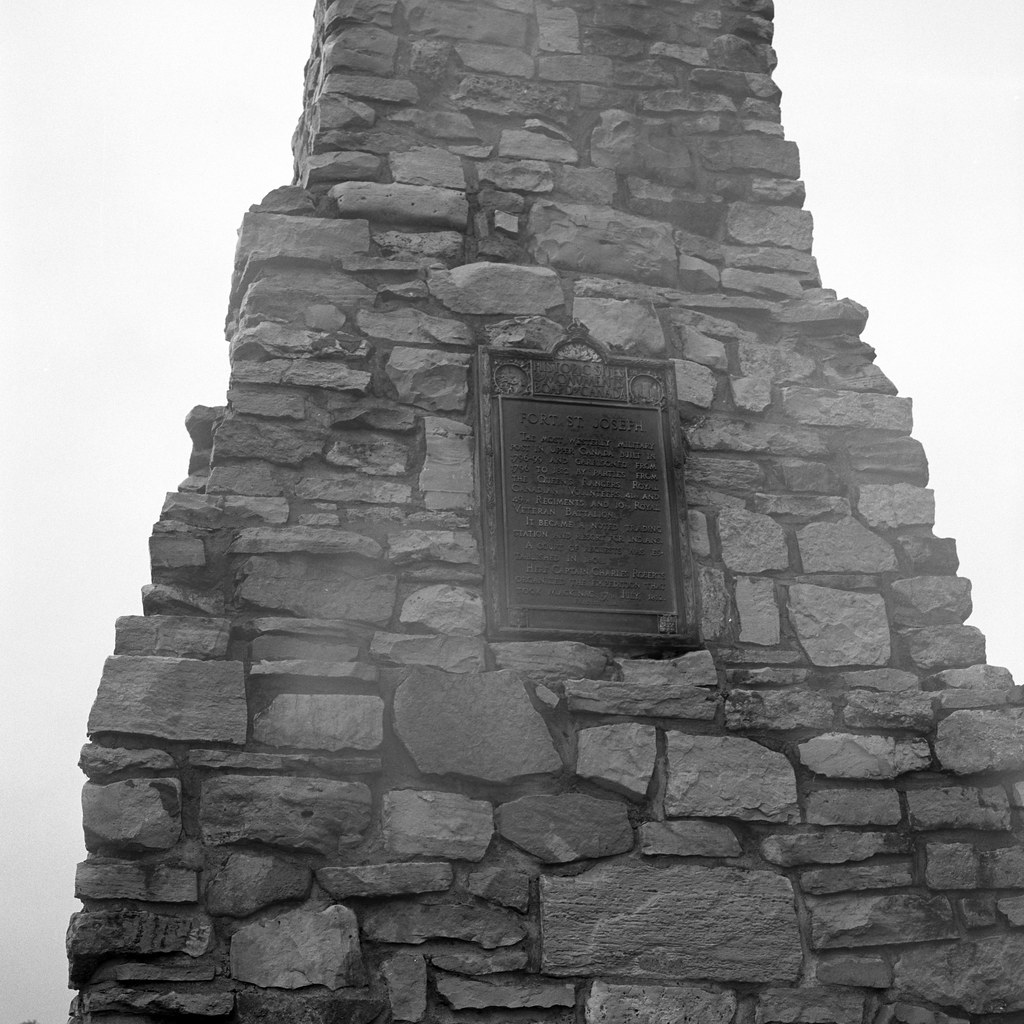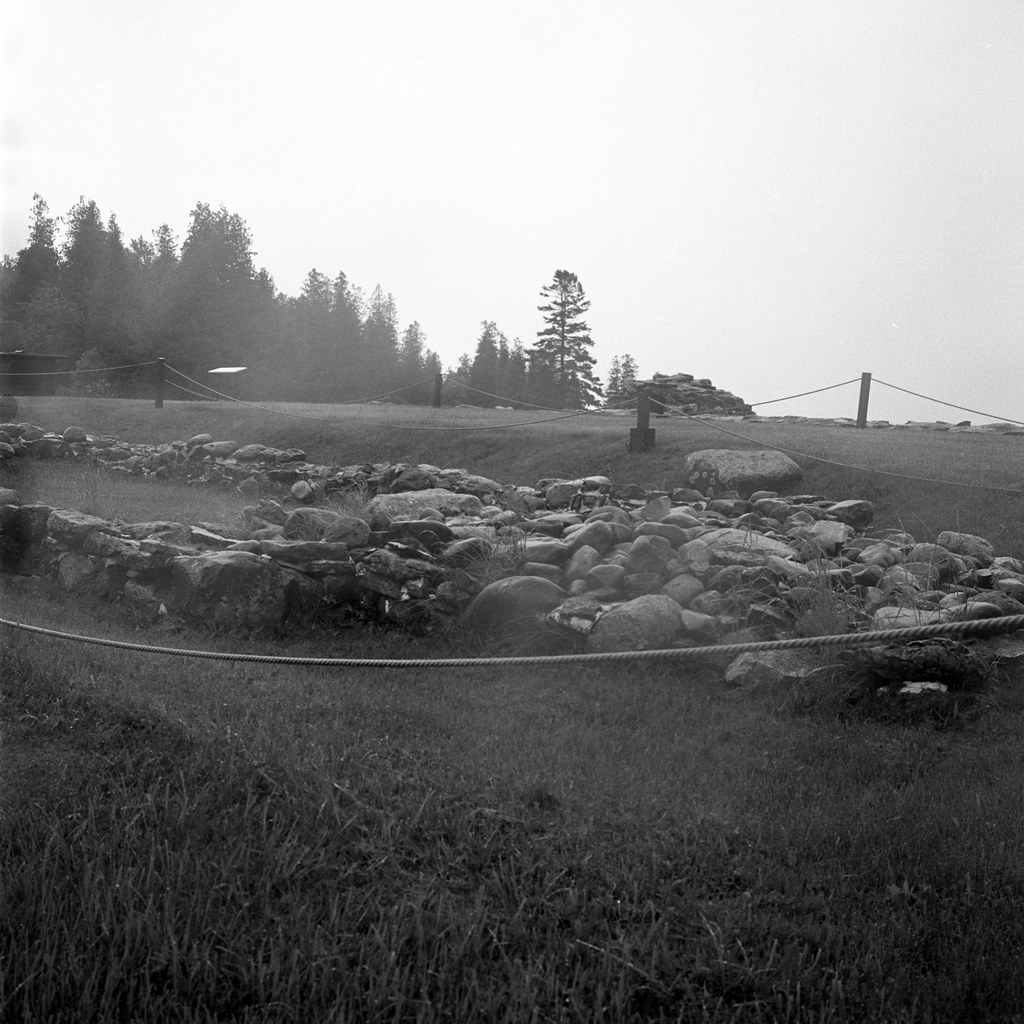I never realized exactly how isolated Fort St. Joseph is, even from the main highway you’re still looking at around 30-45 minutes drive down to the south western corner of St. Joseph Island. And to make things all the better it was pouring rain the day I visited these distant ruins, at least the wonderful staff at the site were welcoming and very friendly, and probably happy that they even saw one other person. It’s no wonder that the 10th Royal Vets that were stationed here in the early 19th century turned to drink.

The path from the visitors centre to the ruins of the fort
When the British were forced out of Fort Mackinac in the late 18th century to comply with the terms of the Jay Treaty they quickly established a new outpost in the remote north of Upper Canada on St. Joseph Island, the outpost was needed to maintain control of the fur trade and maintain good relations with the natives in the area. Construction on Fort St. Joseph on St. Joseph Island began in 1798 and by 1803 a small outpost had been setup. The sudden arrival of engineers, soldiers and workers perturbed the local population of natives, but the British treated them kindly, and openly traded with them. Being the most remote outpost in Upper Canada supplies and manpower were slow to arrive. By 1807 the fort had a garrison of 39 men from the 10th Royal Veteran Battalion (RVB) under the command of Captain Roberts. The fort itself consisted of a palisade wall, a stone magazine, and several buildings that served as barracks, storehouses, a kitchen, and offices for the British Indian Department. The fort however remained out manned and out gunned if any force attempted to lay claim to the fort.
Relations between the British Empire and the United States came to a head in the summer of 1812 with the declaration of war. General Brock quickly realized that the small outpost of Fort St. Joseph was suddenly a strategic step off point and quickly sent a message to Captain Roberts. Roberts was ordered to take his whole garrison and any local ally and native warrior and take back Fort Mackinac. The tiny fort was thrust into a major action of the war to ensure British control of the north. On July 17th Captain Roberts, the 39 men of the 10th RVB, 400 Voyageurs, and Native Warriors set sail and quickly took Fort Mackinac, the equally small American garrison there unaware that a state of war even existed, exactly how Brock had hoped. The very first action of the war had been launched from the smallest British Fort in the area.

The remains of the fort’s powder magazine.
With the British again occupying in force Fort Mackinac, Fort St. Joseph continued to serve as a trading post for the Northwest Company and offices for the British Indian Department while military operations continued out of the larger Fort Mackinac. After the British defeat at the Fort of Lake Erie and the Battle of the Thames in 1813 the St. Joseph was abandoned completely. In 1814 an American force under George Croghan in an attempt to take Fort Mackinac back arrived first at Fort St. Joseph finding it abandoned set fire to the fort leaving it in ruins. They did not touch the Northwest Company warehouse or the native settlement nearby. Moving on to St. Mary (modern day Sault Ste. Marie), but failed to take Mackinac back from the British.
After the war England was again forced to turn Fort Mackinac back over to the Americans, but returning to St. Joseph finding it burned save the powder magazine, opted instead to operate a small outpost on Drummond Island for a short time before moving all military and trade operations to Penetanguishene. Fort St. Joseph was lost to time and slowly nature took over St. Joseph Island. The fort remained lost until 1920 when members of the Sault Ste. Marie historical society uncovered the fort’s ruins, by the late 1940s an access road and picnic area had been constructed to allow anyone to come and view the ruins. Being largely unoccupied and undisturbed like all the forts in Southern Ontario that had urban centers grow up around them, Fort St. Joseph had lain undisturbed since its destruction in 1814 offered an undisturbed dig site for teams from the University of Toronto in 1963 and 1964 which revealed many glimpses into the life of soldiers in the remote outpost in the early 19th century. Parks Canada took over the stewardship of the site in 1974 and built a visitor center and parking. The ruins are open to the general public, trains allow you to view the ruins and take in the natural beauty of northern Ontario.

An old historic sites plaque mounted on the ruins marking the fort and Captain Roberts attack on Mackinac Island
Written with files from:
Guidebook to the Historic Sites of the War of 1812 Second Edition by Gilbert Collins – 2006 The Dundurn Group Publishers
Web: www.pc.gc.ca/lhn-nhs/on/stjoseph/index.aspx
Web: algoma1812.com/History/Fort.aspx
Rolleiflex 2.8F – Carl Zeiss Planar 80mm 1:2.8 – Kodak Tri-X 400 (400TX)
Kodak Xtol (1+1) 9:00 @ 20C

